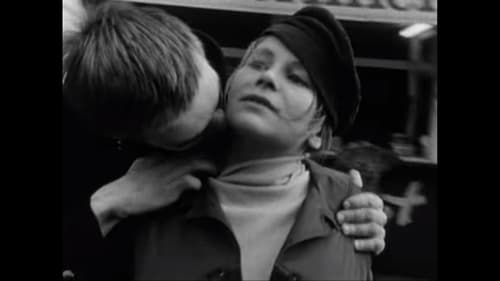
(archive material)
At the end of the 1960s the post-war generation began to revolt against their parents. This was a generation disillusioned by anti-communist capitalism and a state apparatus in which they believed they saw fascist tendencies. This generation included journalist Ulrike Meinhof, lawyer Horst Mahler, filmmaker Holger Meins as well as students Gudrun Ensslin and Andreas Baader.

Film by a student collective of the dffb.

Gerd Conradt films men carrying a red flag in a relay race through Berlin, to hoist it on the balcony of the current Mayor’s seat. A cinematic experiment based on Eadweard Muybridge, Andy Warhol and New American Cinema. A study in men, movements and a symbol. This is the 7th part of this series of film exercises. The other 6 parts were staged by Harun Farocki (Part 1), Carlos Bustamante (Part 2), Helke Sander (Part 3), Holger Meins (Part 4), Wolfgang Petersen (Part 5), Philip Werner Sauber (Part 6).

Director
Instructions on how to make a Molotov Cocktail

Director

Cinematography
Western for the SDS portrays the development of the left as a learning process among women who sharpen their awareness in the movement but continue to have no say. The controversy surrounding the film is shown in the DFFB weekly newsreel Requiem for a Company. The Western was confiscated by the administration, and eighteen students who sided with Straschek were expelled from the academy. The film was considered lost until its rediscovery in 2018.

Cinematography
Clearly influenced by Brecht and Jean-Marie Straub, criticizes the reduction of human relations to economic relations as well as the US imperialism in Vietnam.

Clearly influenced by Brecht and Jean-Marie Straub, criticizes the reduction of human relations to economic relations as well as the US imperialism in Vietnam.

Director
Film announcing the November 4, 1968 demonstration and urging demonstrators to be prepared to fight.

Cinematography
“Six young people move through a city in order to establish the starting point of their joint action. But they can’t agree on the topic. In the end everybody goes their own way and leaves the city.” - Hartmut Bitomsky

Cinematography
I was on a ship – this sounds like a novel: I had just embarked for Venezuela on June 2, 1967 as the Shah of Iran was arriving in West Berlin. There were protests, a student was shot, and a new form of opposition movement came into existence. The idea for this film came to me while I was still aboard the ship. The film is structured like a commercial. The film takes a metaphor literally: words can become weapons. However, it also shows that these weapons are made of paper. The weapon spoiled everything for the Shah and his wife, they are wearing paper bags on their heads with faces drawn on them – the kind of bags worn by Iranian students during demonstrations to hide their identity from the Savak, the Iranian Secret Service. When I showed this film to the audiences in the late 60s, it was highly praised. I think people understood then that over obviousness is also a form of irony. This capacity was lost a few years later. I think it's coming back today. –HF

Self
Scenes from Berlin: Kids playing football, a man tries to light a fire in his stove, a film team sets up a shot in a park, students discuss politics.

A concise blast of feminist film making, Sander's first film is a tense yet playful four minute short that dissects a typical urban scene at a bus stop on a busy street in Berlin.

Sound Director
A concise blast of feminist film making, Sander's first film is a tense yet playful four minute short that dissects a typical urban scene at a bus stop on a busy street in Berlin.

Editor
Twelve short scenes of the life of an elderly homeless person, Oskar Langenfeld, in Berlin.

Writer
Twelve short scenes of the life of an elderly homeless person, Oskar Langenfeld, in Berlin.

Director
Twelve short scenes of the life of an elderly homeless person, Oskar Langenfeld, in Berlin.

Cinematography
Short thriller about an older woman and an escaped convict.










